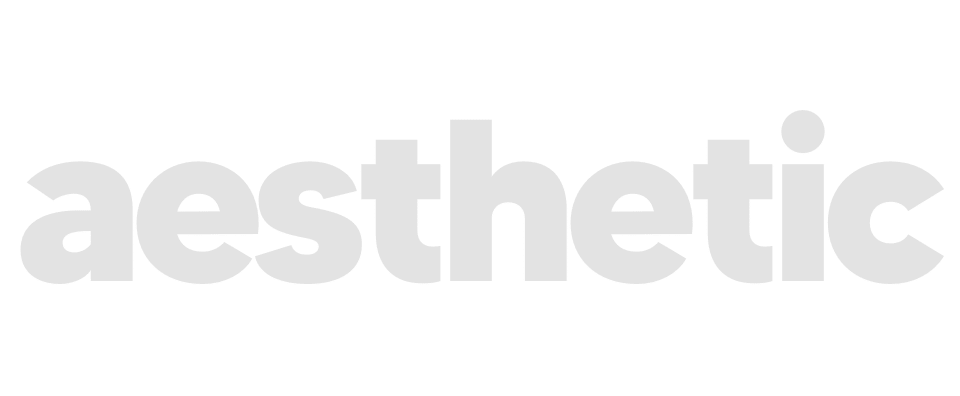Developing a website can be an exciting yet daunting task, especially when it comes to budgeting. If you’re a small business owner or an entrepreneur looking to create or update your website, you may be overwhelmed by the costs involved. Understanding these expenses is crucial to ensure you spend time on essential features.
In this article, you’ll learn about the key components to budget for when developing a website, including essential and optional expenses, hidden costs, and tips for managing your budget wisely. By the end, you’ll have a clear roadmap to ensure your website project succeeds, providing excellent value for your investment.
Let’s dive into your budget when developing a website.

Understanding the Key Cost Components
When developing a website, several key cost components must be considered. Each element plays a crucial role in the overall functionality and success of your site. Here’s a breakdown of the essential expenses you should budget for:
Domain and Hosting
Domain Name:
Your domain name is your website’s online address (e.g., www.yourbusiness.com.au). Domain registration typically costs between $10 and $50 per year, depending on the domain extension and registrar.
Hosting:
Web hosting is the service that allows your website to be accessible on the internet. Hosting costs can vary significantly based on the type and quality of service. Shared hosting is the most economical, starting at around $5 to $10 per month. For better performance and security, consider VPS (Virtual Private Server) or dedicated hosting, which can range from $20 to $100+ per month.
Design and Development
Design:
The design of your website encompasses the layout, colour scheme, typography, and overall user experience. Depending on your needs, you might opt for a custom design or use a pre-designed template. Custom designs generally cost between $2,000 and $10,000, while templates can be more budget-friendly, ranging from $50 to $500.
Development:
Development involves building the actual website, including coding and integrating functionalities. The cost of development can vary widely based on the complexity of your site. A simple informational site might cost between $3,000 and $5,000, while a more complex e-commerce site could range from $10,000 to $30,000 or more.
Content Creation
Copywriting:
Quality content is key to engaging your visitors and improving your search engine rankings. Professional copywriting services typically charge between $100 and $300 per page, depending on the length and complexity of the content.
Images and Multimedia:
Visual content, such as images, videos, and infographics, enhances your website’s appeal. Stock photos can cost between $10 and $50 each, while custom photography or videography services might range from $500 to $5,000 or more.
Maintenance and Updates
Ongoing Maintenance:
Regular maintenance is essential to keep your website running smoothly and securely. This can include software updates, security patches, and backups. Monthly maintenance plans generally cost between$14 and $300.
Updates and Improvements:
As your business grows, you may need to update your website with new features or content. Budgeting for these updates ensures your site remains relevant and effective. Costs can vary based on the scope of the changes, but setting aside $500 to $2,000 annually is a good starting point.
By understanding and planning for these key cost components, you can create a realistic budget that ensures your website development project runs smoothly and meets your business needs.
Optional but Recommended Expenses
Beyond the essential costs, several optional expenses can significantly enhance your website’s performance, security, and overall effectiveness. While not mandatory, these investments can provide substantial benefits and are worth considering.
SEO and Marketing
Search Engine Optimisation (SEO):
SEO is crucial for improving your website’s visibility on search engines like Google. A well-optimised site can attract more organic traffic, leading to increased sales and engagement. SEO services can vary widely in cost, but a typical investment ranges from $1,000 to $5,000 per month, depending on the level of service and competition in your industry.
Digital Marketing:
To drive traffic and conversions, you may want to invest in digital marketing strategies such as pay-per-click (PPC) advertising, social media marketing, and email marketing. Budgeting for these efforts can range from $500 to $5,000+ per month, based on your goals and the platforms you choose to utilise.
Security Features
SSL Certificate:
An SSL certificate encrypts data transferred between your website and its users, ensuring secure transactions and improving trust. Many hosting providers include basic SSL certificates in their packages, but premium certificates with extended validation can cost between $50 and $300 per year.
Advanced Security Measures:
To protect your site from cyber threats, consider additional security measures such as firewalls, malware scanning, and DDoS protection. These services can cost between $100 and $500 per year, depending on the level of protection required.
Analytics and Tracking
Web Analytics Tools:
Understanding your website’s performance and user behaviour is crucial for making informed decisions. Tools like Google Analytics are free, but premium options such as Adobe Analytics or custom analytics solutions can range from $100 to $1,000+ per month, depending on the complexity and depth of insights needed.
Conversion Rate Optimisation (CRO):
CRO involves analysing user behaviour and making adjustments to improve your site’s conversion rates. Professional CRO services can help you get the most out of your traffic, with costs typically ranging from $1,000 to $10,000+ based on the scope of work.
Investing in these optional but recommended expenses can significantly enhance your website’s effectiveness, security, and overall success. Prioritising these areas can help you achieve a higher return on investment and ensure your website remains competitive in the digital landscape.

Hidden Costs to Watch Out For
While planning your website budget, it’s crucial to be aware of potential hidden costs that can catch you off guard. These expenses might not be immediately obvious but can significantly impact your overall budget.
Unexpected Development Delays
Scope Creep:
Scope creep occurs when additional features or changes are added to the project beyond the original plan, often leading to increased costs and extended timelines. To avoid this, ensure you have a detailed project plan and clear communication with your developer about the project scope and deliverables. If scope changes are necessary, make sure to discuss and document the cost implications.
Technical Issues:
Unforeseen technical challenges can arise during development, requiring extra time and resources to resolve. This might include compatibility issues with different browsers or devices, bugs in custom code, or problems integrating third-party services. Budgeting a contingency fund of about 10-15% of your total development costs can help cover these unexpected expenses.
Additional Functionality Requirements
Third-Party Integrations:
Integrating third-party tools or services, such as e-commerce platforms, payment gateways, or CRM systems, can add functionality to your website but may come with additional costs. These integrations might require purchasing licenses or subscriptions and potentially hiring a developer to implement and maintain them. Costs can range from $50 to $500+ per month, depending on the service.
Custom Features:
If you decide to add custom features or functionalities to your website after the initial development phase, these can incur extra costs. Examples include custom forms, interactive elements, or advanced search capabilities. The cost of these features can vary widely, but it’s wise to set aside $1,000 to $5,000 for potential customisation needs.
Tips for Budgeting Effectively
Effective budgeting is key to the success of your website development project. Here are some tips to help you allocate your resources wisely and get the best value for your investment.
Prioritising Essential Costs
Focus on Core Features:
Identify the core features that your website must have to function properly and meet your business objectives. Prioritise these essential elements in your budget. This includes a responsive design, user-friendly navigation, essential e-commerce functionalities (if applicable), and high-quality content. Allocate the majority of your budget to these critical components to ensure a strong foundation for your website.
Plan for Scalability:
While it’s important to prioritise essential features, also consider future growth. Investing in a scalable website architecture can save you money in the long run by accommodating future expansions without needing a complete overhaul. This might mean spending a bit more upfront on a flexible content management system (CMS) or a robust hosting solution.
Finding Cost-Effective Solutions
Use Pre-Designed Templates:
If custom design costs are beyond your budget, consider using pre-designed templates. Many platforms offer high-quality templates that can be customised to fit your brand. This can significantly reduce design costs while still providing a professional look. Popular template options range from $50 to $200.
Leverage Open Source Platforms:
Open-source platforms like WordPress, Joomla, or Drupal offer a cost-effective way to build a website. They provide a wide range of plugins and themes, many of which are free or low-cost. While you might still need to invest in some premium plugins or professional help for setup, these platforms can save you considerable money compared to proprietary solutions.
Outsource Selectively:
Consider outsourcing specific tasks to freelancers or agencies where it makes financial sense. For instance, you might hire a freelance copywriter for content creation or a graphic designer for visual elements, while handling other tasks in-house. Platforms like Upwork or Freelancer can help you find qualified professionals at competitive rates.
Allocating Budget for Future Growth
Set Aside a Contingency Fund:
Unexpected costs can arise at any stage of your project. Setting aside a contingency fund, typically around 10-15% of your total budget, can help cover unforeseen expenses without derailing your project.
Invest in Training:
If you plan to manage and update your website in-house, invest in training for your team. This might include learning how to use your CMS, basic SEO techniques, or content creation skills. Training can be a valuable long-term investment, reducing your reliance on external help. Budgeting $500 to z42,000 for training and development can be a wise move.
Monitor and Adjust:
Regularly review your budget and website performance. Use analytics tools to track visitor behaviour and identify areas for improvement. Adjust your spending as needed to focus on strategies that yield the best results. This ongoing monitoring can help you stay on budget while continuously improving your site.
These budgeting strategies will help you make informed decisions and maximise your return on investment.

Moving Forward,
Budgeting for website development involves careful planning and a clear understanding of both essential and optional expenses. By breaking down the costs, you can make informed decisions and ensure your website project is both successful and cost-effective.
Here’s a quick recap of what you need to consider:
1. Key Cost Components:
- Domain and hosting
- Design and development
- Content creation
- Maintenance and updates
2. Optional but Recommended Expenses:
- SEO and marketing
- Security features
- Analytics and tracking
3. Hidden Costs to Watch Out For:
- Unexpected development delays
- Additional functionality requirements
- Regular updates and maintenance
4. Tips for Budgeting Effectively:
- Prioritising essential costs
- Finding cost-effective solutions
- Allocating budget for future growth
By following these guidelines, you can create a realistic and flexible budget that accommodates your business needs and future growth. Remember, investing wisely in your website can yield significant returns, from enhanced online presence to increased customer engagement and sales.
Plan, prioritise essential features, and don’t forget to allocate funds for ongoing improvements. Your website is a critical asset for your business, and with the right budgeting strategies, you can ensure it serves you well.
For more insights, delve into our blog on the Cost Breakdown Of Building A Website, where we explore the detailed expenses involved in creating a high-quality site, ensuring you’re prepared for every step of the process. Additionally, check out our guide on How To Maximise Web Design Impact, packed with expert tips and strategies to elevate your website’s design and enhance user experience.




